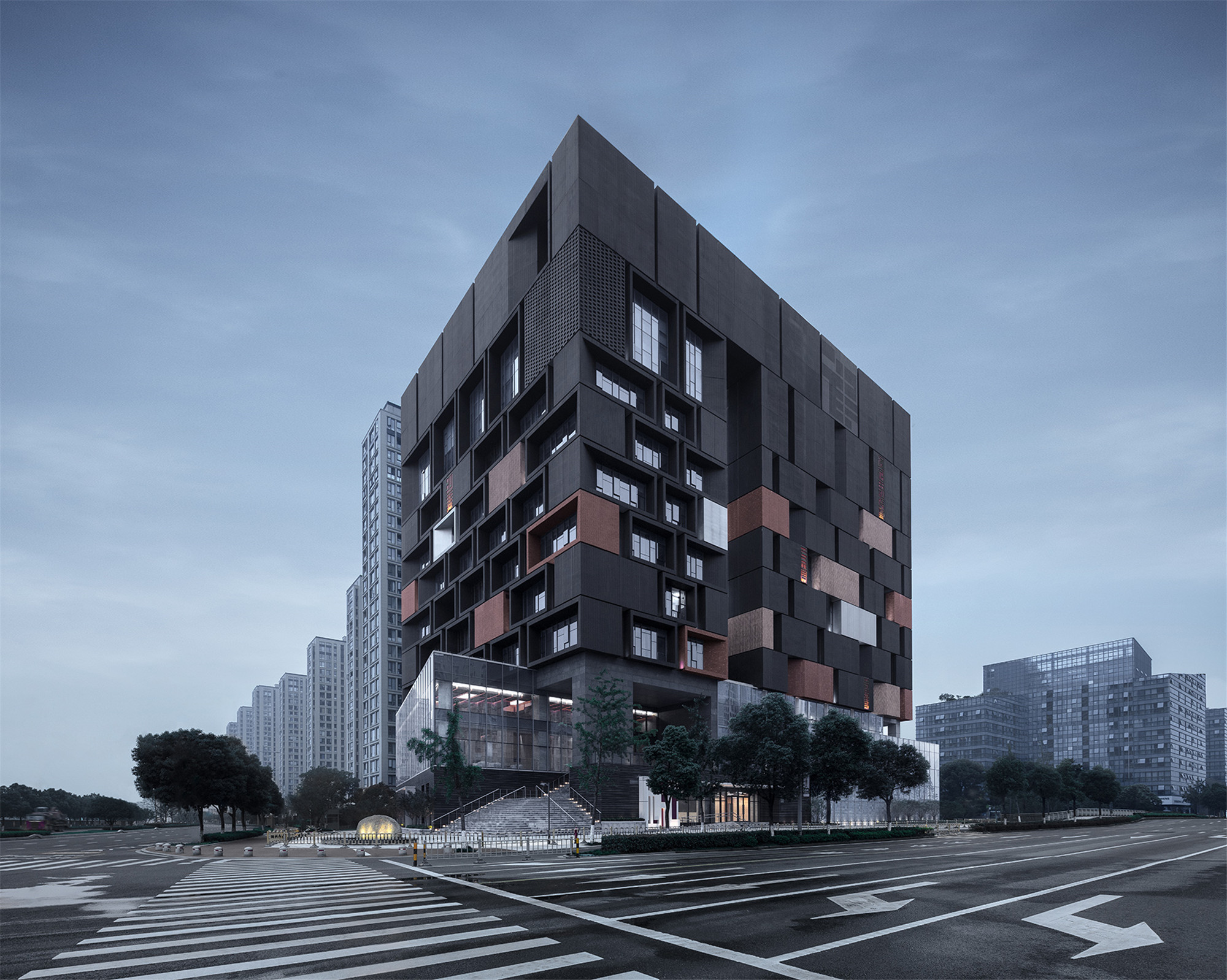
设计单位 DC国际·c+d设计研究中心
项目地点 浙江宁波
建设时间 2020年7月
建筑面积 23688平方米
本文文字由设计单位提供。
华夏文明,历来注重对历史的记载与保存。档案馆作为收藏与保存历史资料的专门机构,其历史最早可以追溯到汉代的兰台。其后,经唐宋的甲库、架阁库,再到明清的皇史宬,档案馆历代都有着充实和发展,始终是国家层面十分重要的文化机构。
Chinese civilization has always paid great attention to the record and preservation of history. The archives, as a specialized institution for the collection and preservation of historical documents, can be traced back to Lantai in the Han Dynasty. After that, it developed into Jiaku and Jiageku in Tang and Song Dynasty to Huangshicheng in Ming and Qing Dynasty. It has been enriched and developed throughout the ages and always been a very important cultural institution at the national level.
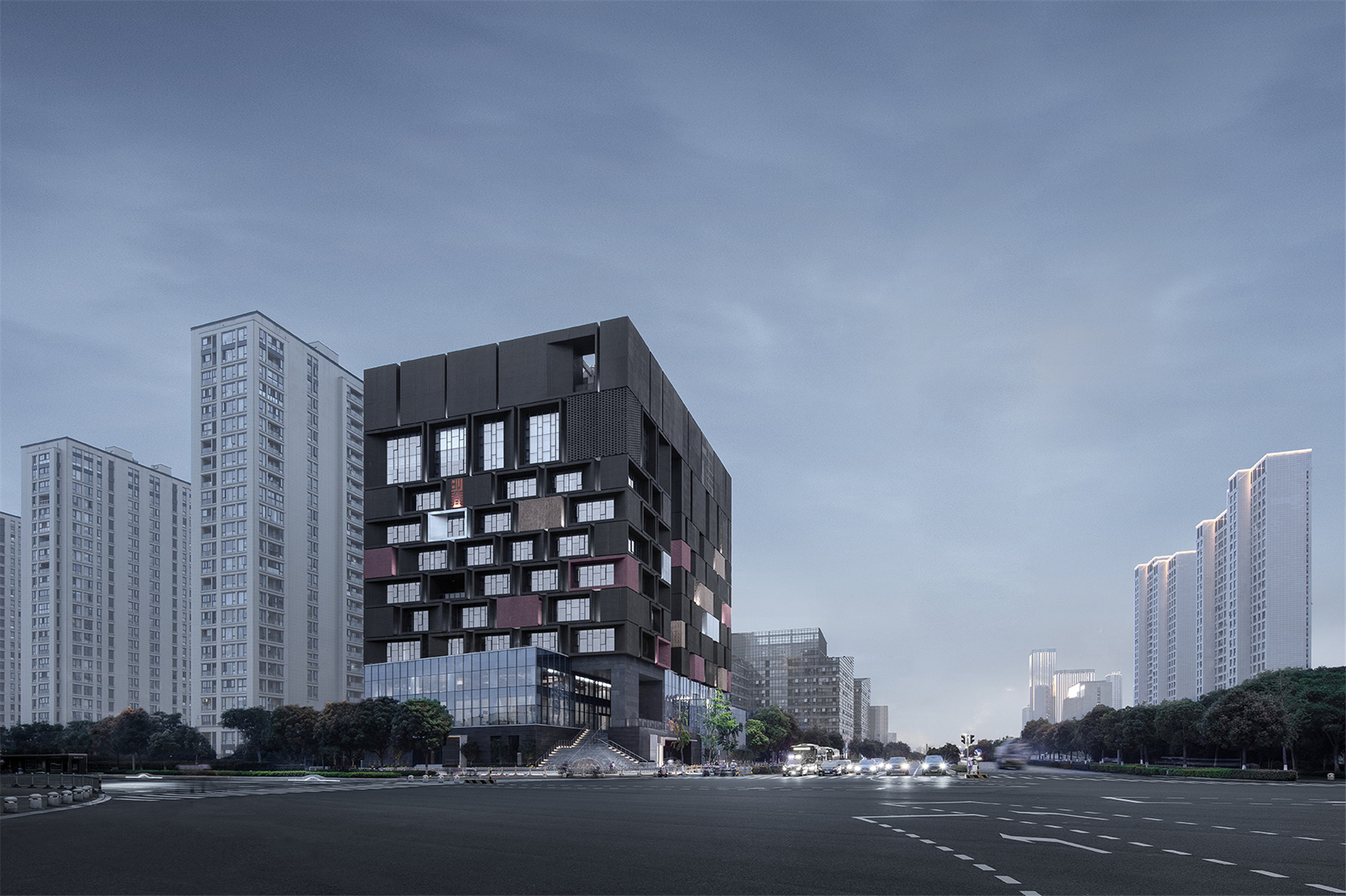
作为档案馆的一种类型,城市建设档案馆保存的是城市建设的资料,收藏的是一部部“筑城史”。如何以建筑的语汇,表达出城建档案馆的这种文化属性,是设计之初摆在我们面前的最重要的问题。
As a type of archives, the Urban Construction Archives preserves materials of urban construction and collects “the history of fortification”. What we concern most, in the early stage of design, is how to express this cultural attribute of the Urban Construction Archives in the language of architecture.
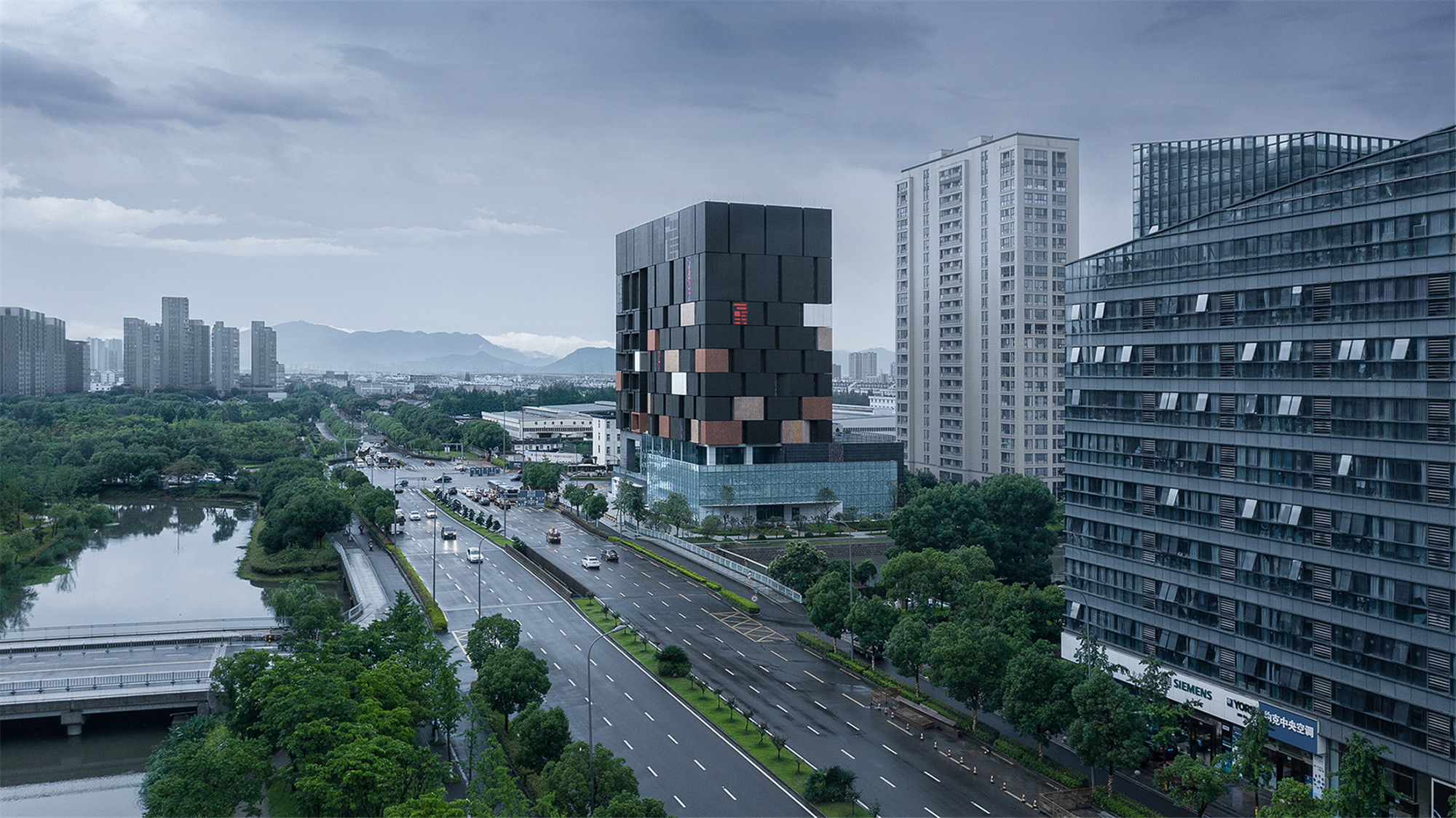
以“砖砌”作为设计概念
城市虽然是人类文明发展的载体,但“筑城”却是一种营造活动,也是一种物化累积的过程。“匠人营国,方九里,旁三门。国中九经九纬,经涂九轨,左祖右社,面朝后市,市朝一夫……周人明堂,度九尺之筵,东西九筵,南北七筵……”《考工记》上对于“筑城”的法则描述,计量单位甚至精确到尺,可见其对于物化营造的重视程度。
City is the carrier of the development of human civilization, while " fortification" is a construction activity and a process of materialization accumulation. “When the architect built the capital, it was square with nine miles and three large and three small gates on each side (two side gates were set). There are nine north-south avenues and nine east-west avenues in the city. Each avenue is wide enough for nine carriages (72 feet) passing at the same time. On the left (east) of the palace is the ancestral temple, and on the right (west) is Sheji (a place to worship gods of the earth and the five grains). The front of the palace is the place where the official worship and the back is the market with a hundred steps respectively… The Mingtang temple of Zhou people is measured by bamboo mat (nine feet). The south hall is 81 feet wide from east to west and 63 feet deep from north to south… The description of the law of "building" in "Kaogongji", the unit of measurement is even accurate to feet, which shows the importance it attaches to materialized construction.

回望整个筑城史,我们希望找到一种朴素而有代表性的建造方式,来实现对于筑城历史的外化表达,而“砌筑”无疑是最恰当的选择。一方面,它作为一种最为传统的建造手段沿用至今;另一方面,它代表着物化累积与逐渐发展的过程。而这个过程,也正是城建档案馆需要收藏的内容。
Looking back at the history of fortification, we hope to find a simple construction method with distinctive features to express the history of city building. And "masonry" is, undoubtedly, the most appropriate choice. On the one hand, This traditional construction technique is still in use today; on the other hand, it represents the process of materialization accumulation and gradual development, which is exactly the content collected by Urban Construction Archives.

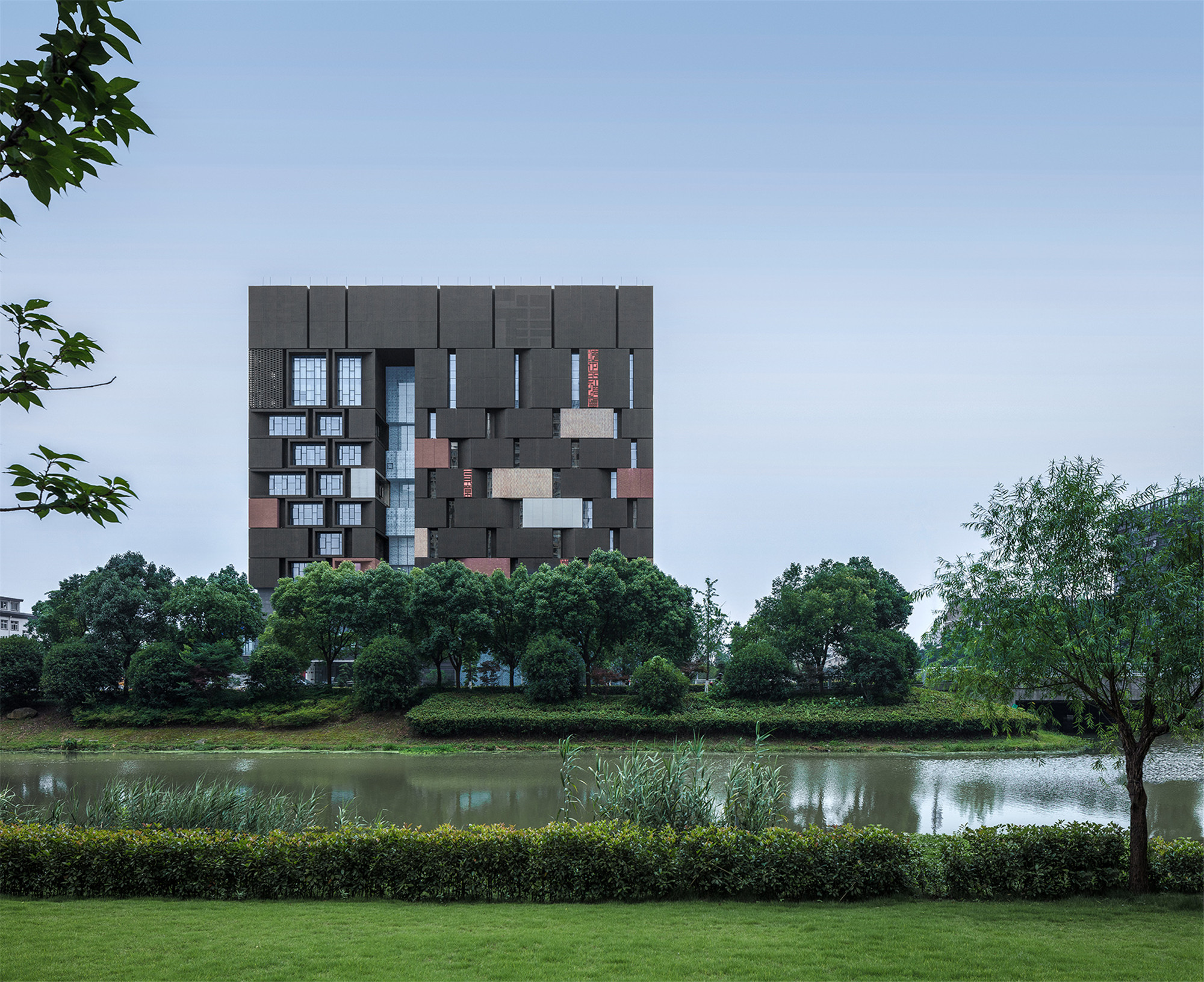
一般而言,“砌筑”的动作,是将某种砌块按照一定的方式进行堆垒,从而形成一个整体性的事物。于传统建筑而言,砌块通常以砖、石为主。而项目以“砌筑”来喻义“筑城”,那么砌筑的对象,首先应该是空间本身,即把空间作为“砌块”。这就需要将档案馆建筑的功能空间进行解构、分类与重组,并进一步将其或公共、或私密、或开放、或封闭的属性外化,形成大小不等、虚实相异的“空间砌块”,有序地砌筑在恰当的位置上。
Generally speaking, the action of "masonry" is to pile up certain blocks in a certain way to form a whole thing. In terms of traditional buildings, the blocks are usually bricks and stones. While this project adopts "masonry" to imply "building a city". The object of masonry should first be the space itself, that is, taking the space as a block. This requires the deconstruction, classification and reorganization of the functional space of the archive building; and further externalizing its public, or private, or open, or closed attributes to form different sizes and virtual or real “space blocks”. Then build them orderly in the right place.
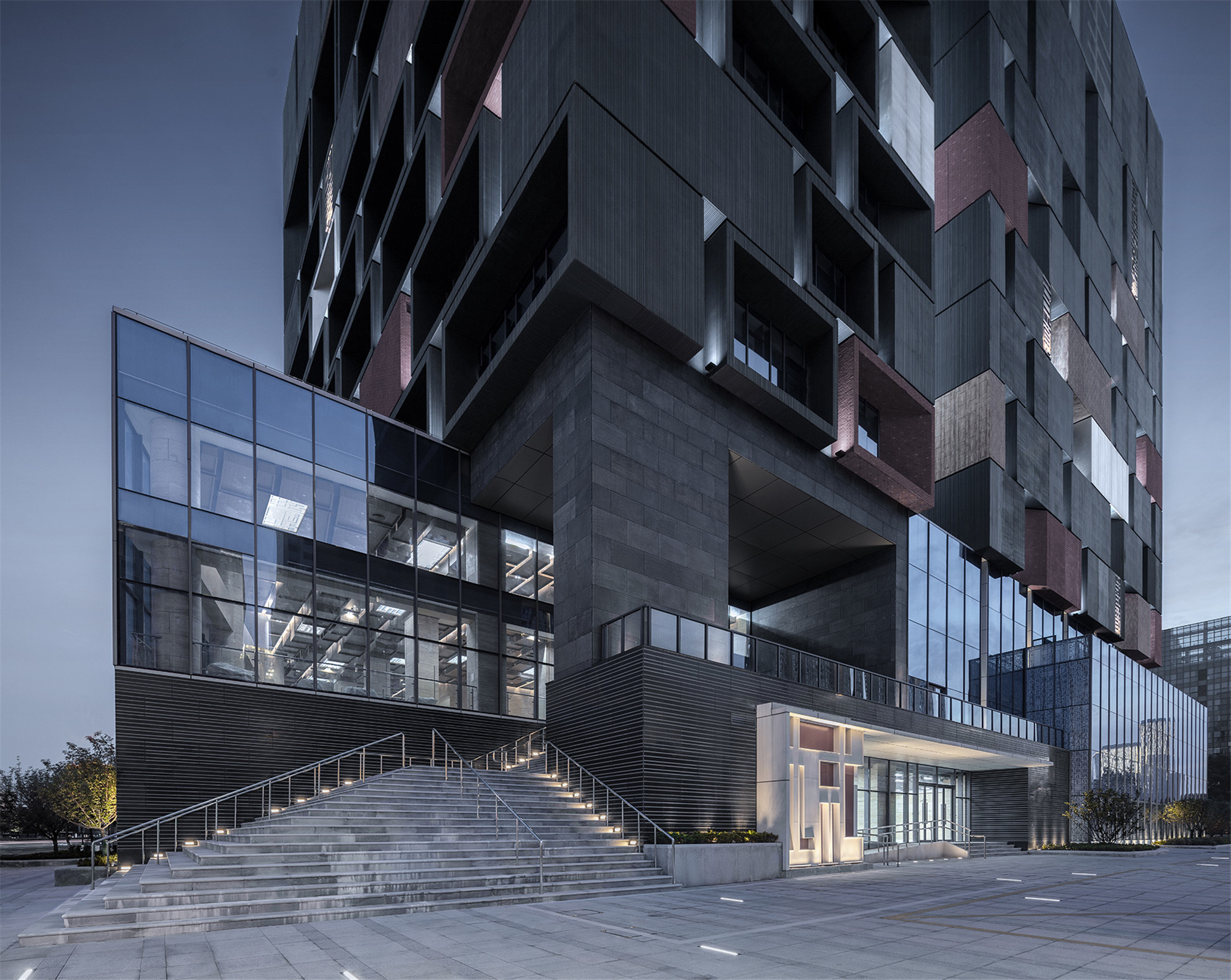
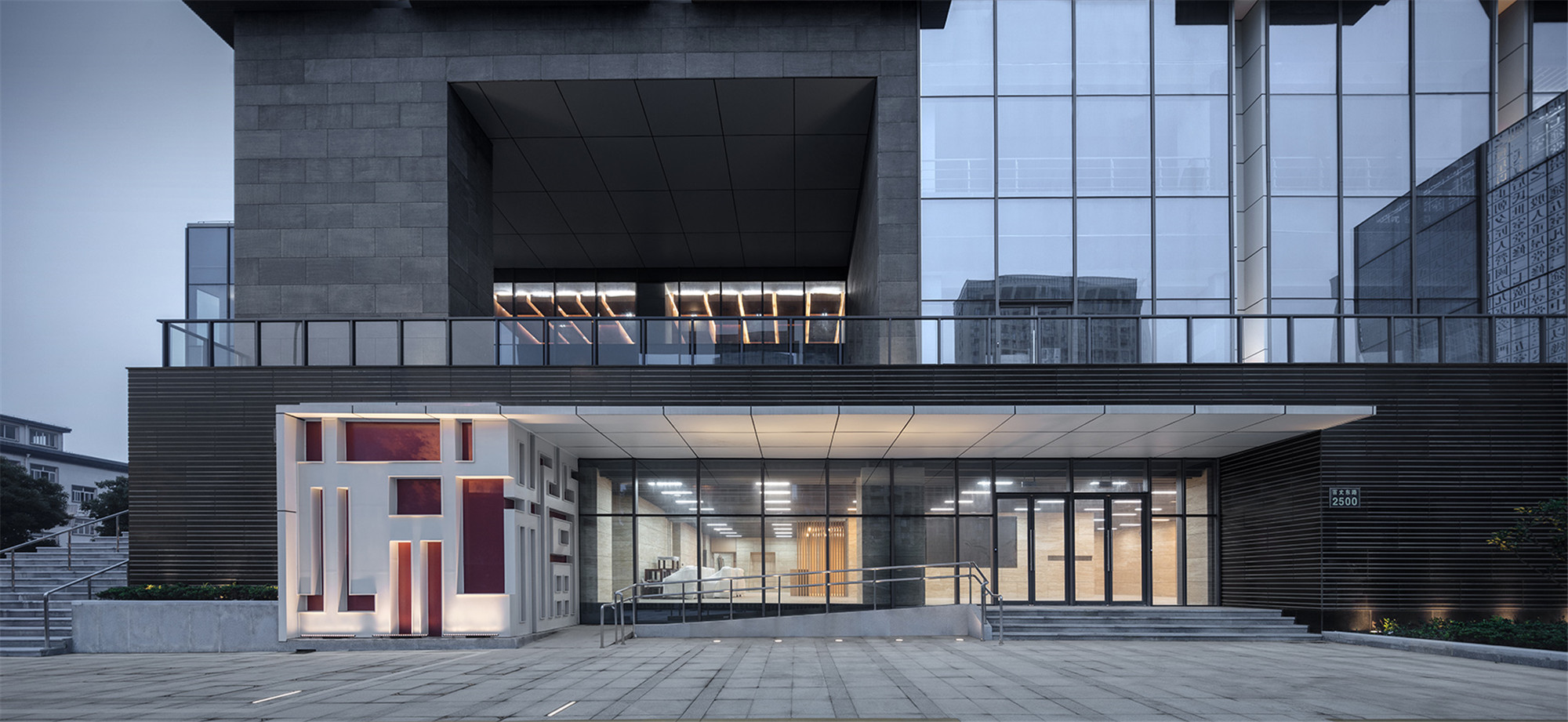
老子说:“凿户牖以为室”,而我们更像是“砌空间以喻城”。
Lao Tzu said: "Chisel doors and windows to build houses"; we are more like: "Building a space to imply city".
关于筑城的历史,我们也希望在这座建筑上可以被直观地阅读到。为此,我们选择了当代城市建设活动中,最具代表性的建筑材质:混凝土、石材、面砖、玻璃、金属板等,并将其随机错落地附着在“砌块”表面,形成某种无序杂乱感,如实展示出城市当下的状态。
We hope that the history of fortification can be read intuitively on this building. Thus, we selected materials that can best represent contemporary urban construction activities: concrete, stone, bricks, glass, metal plates, etc.; they are randomly attached to the surface of the "block" to form a certain sense of disorder and chaos; and truly illustrate current state of the city.

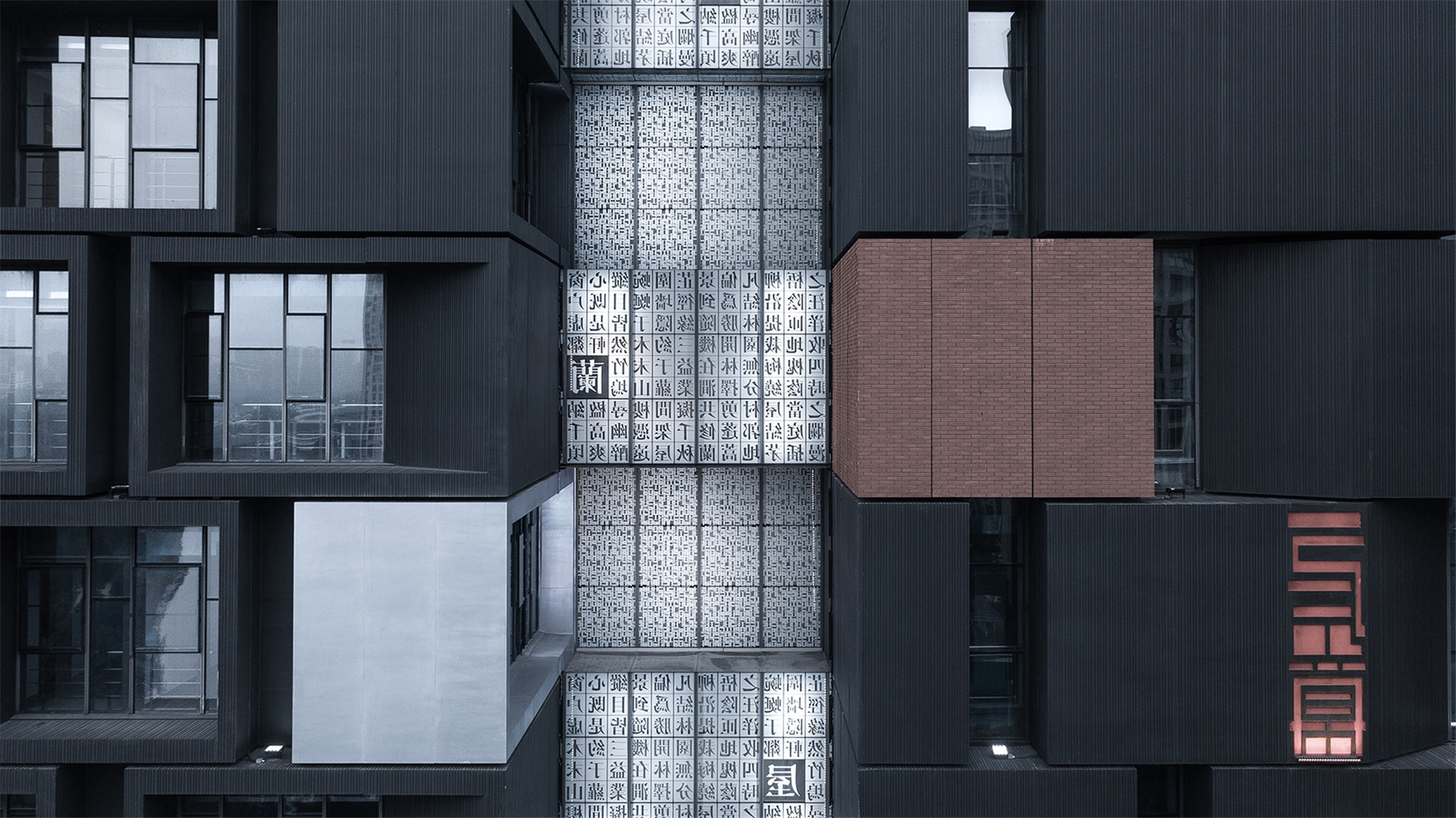

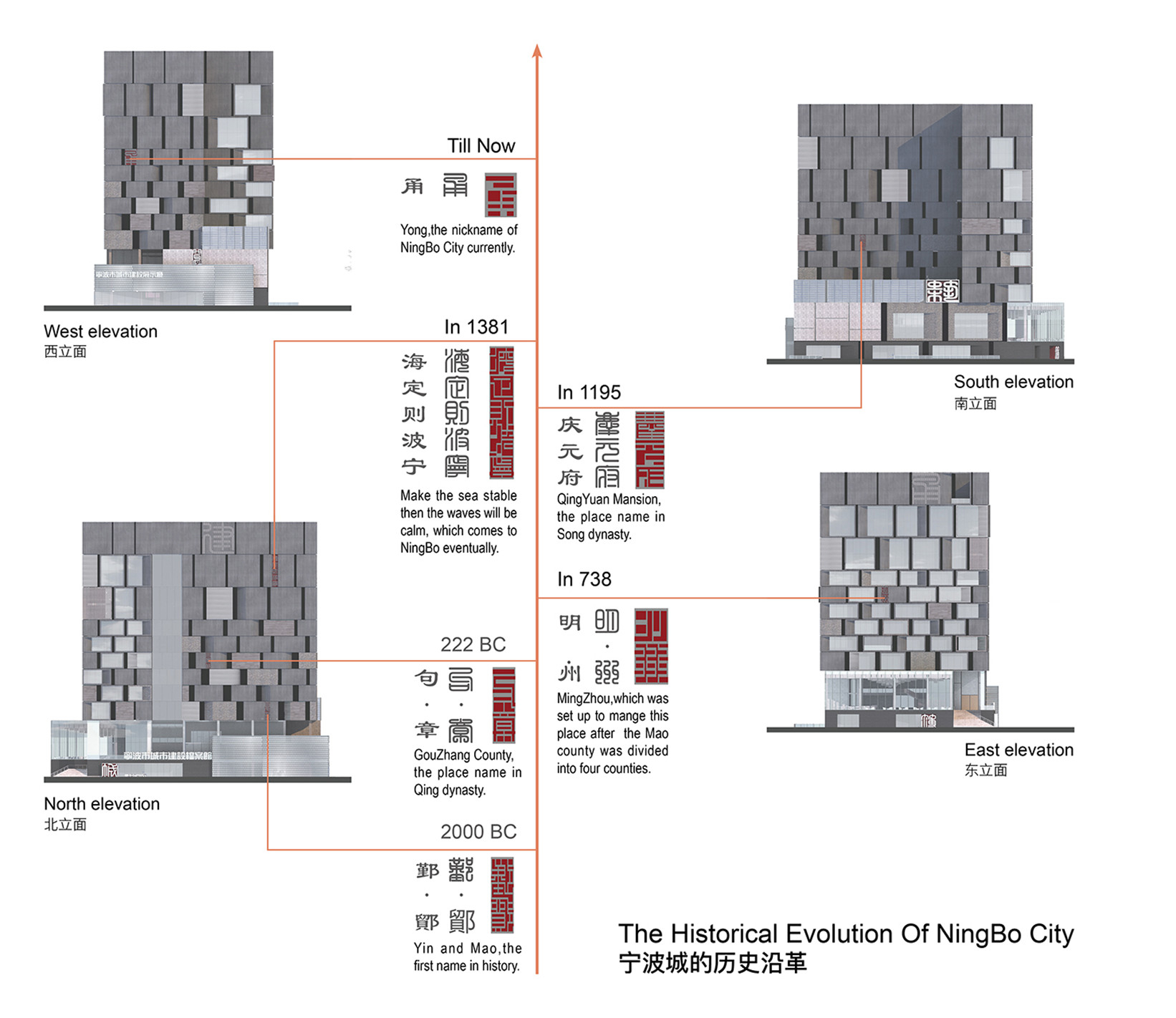
我们从天一阁收藏的古铭文砖中得到启发,将宁波城历史各时期的行政名称,以篆书转译的方式压印在“砌块”上,形成隐晦却又可读的纹饰系统。此外,为了增加玻璃砌块的质感,营造朦胧的内部光影效果,我们将《考工记》中最早关于城市建设,以及《园冶》中关于园林营造的文字段落,以活字排版的方式,镜像印刷在建筑底层与空中的两片玻璃幕墙上。玻璃材料因此变成一种可以被解读的肌理,提示着建筑的功能与文化属性。
We are inspired by the ancient inscription bricks collected by Tianyi Pavilion and embossed the administrative names of Ningbo in various periods of history into seal scripts and then imprinted to the "blocks" to form an obscure but readable pattern system. In addition, in order to increase the texture of the glass blocks and create a hazy interior light and shadow effect, we used words and paragraphs about urban construction in "Kaogongji" and garden construction in "Yuanye" to be mirrored and printed with type composition on two glass curtain walls on the ground floor and float in the space. Thus, the glass material becomes a texture that can be interpreted, suggesting the function and cultural attributes of the building.


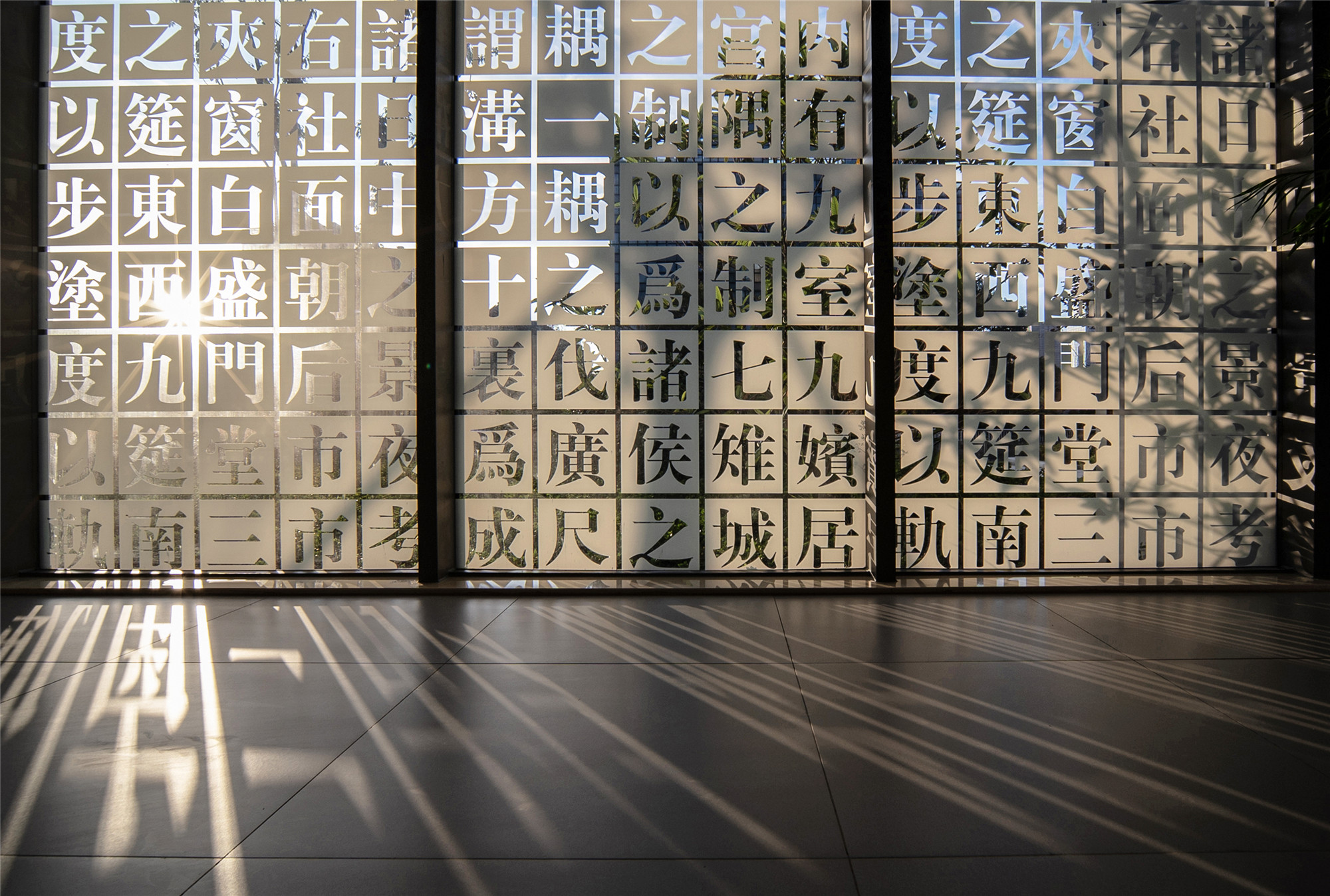
以“砌筑”作为营造法则
对于建筑而言,被使用的虽然是空间,但营造的却是实体。“砌筑”作为最为传统的营造手段,其本质可以理解为基本单元模块的组合,这种组合遵循着最直接的力学原则。如果由此反观整个传统营造体系,那么包括木构系统在内,都可以被广义地理解为“砌筑”系统,整个营造史也就是一部砌筑的历史。
Creating space is what architecture is for, but what we build is entity. The essence of "Masonry" which is the most traditional construction method can be understood as a combination of basic unit modules. This combination follows the most direct principles of mechanics. From this perspective, the entire traditional construction system, including the wooden structure system, can be generally understood as a "masonry" system. Meanwhile, the history of construction is also a history of masonry.
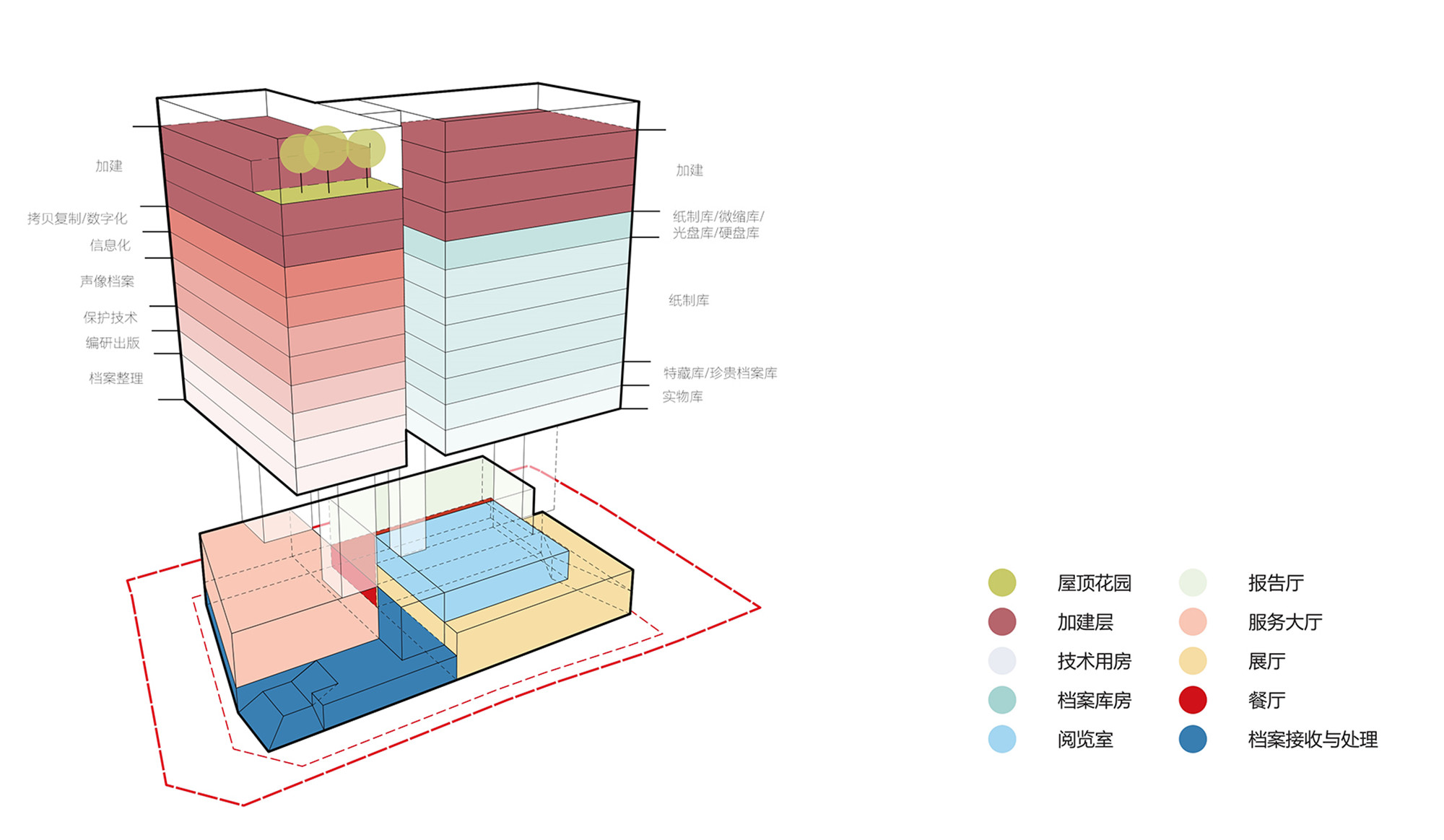
因此,在项目的实践中,我们希望“砌筑”不仅仅是作为“筑城”的文化隐喻而存在,其作为营造逻辑的意义更为重要。于是,我们设计了一整套基于当今建造技术条件的“砌筑式”营造法则,并付诸实施,整个过程也算是对传统营造体系的一次致敬。
Therefore, in this project, we hope that "masonry" does not only exist as a cultural metaphor of "city building". While its significance as construction logic is more important. Thus, we planned a set of "masonry" construction rules based on the current construction technology and put them into practice; the whole process is a tribute to the traditional construction system as well.

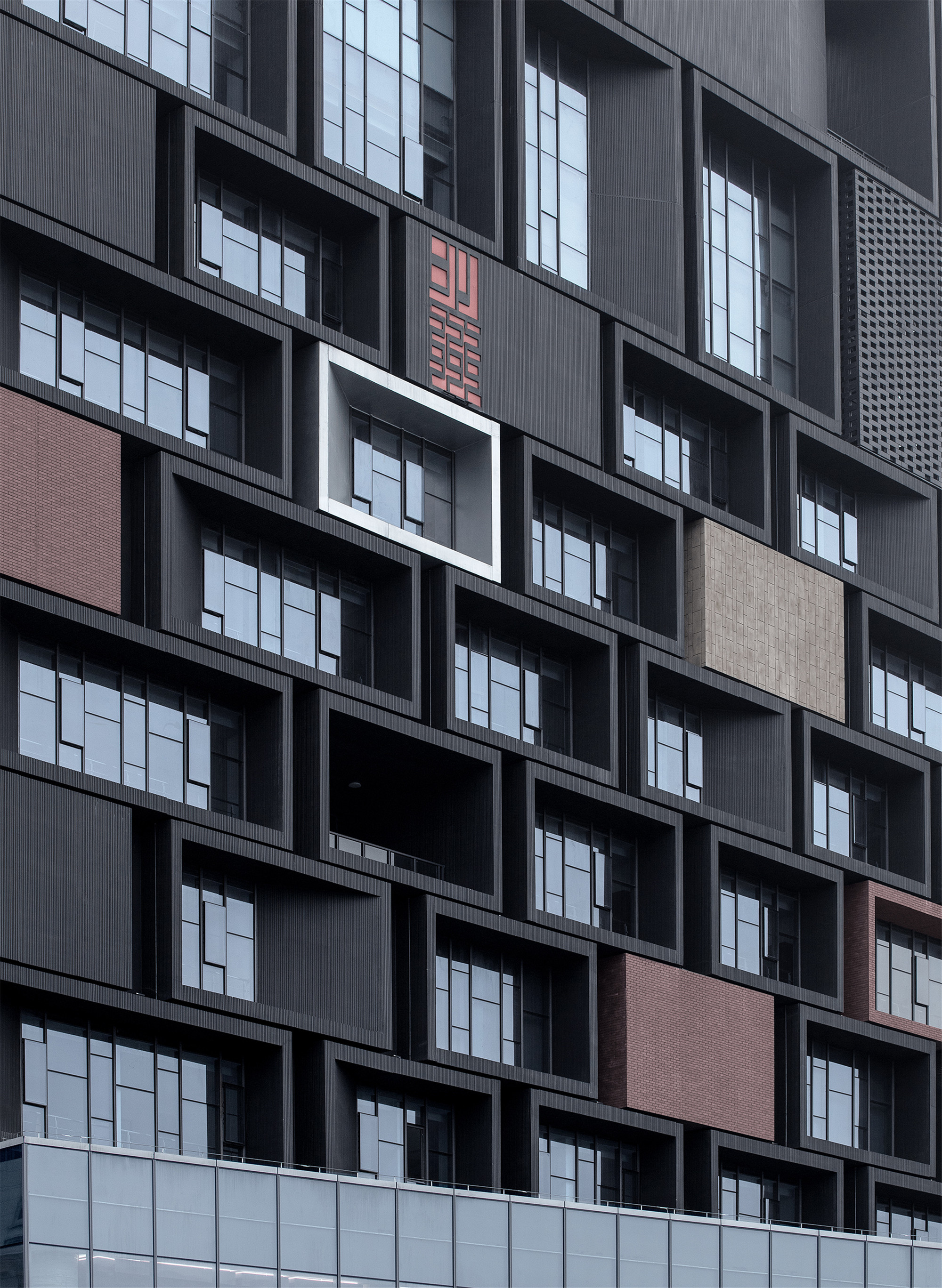
首先是结构。整个建筑采用钢筋混凝土框架结构体系。为了实现结构的“砌筑”,我们将整建筑的混凝土结构进行模块化切割,三层以上的结构构件,包括梁、楼板、柱、楼梯等,全部采用预制装配式施工。混凝土构件在工厂预制和养护完成后,到现场只需要做相对简单的浇筑连接。这使施工的精度得到提高,施工的周期也大幅度减小。项目也因此成为宁波地区公共建筑施工技术领域的一次突破。
First, the structure. The entire building adopts a reinforced concrete frame structure system. In order to realize "masonry" in its structure, we cut the concrete structure of the entire building modularly. The structural components of more than three floors, including beams, floors, columns, stairs, etc., are all prefabricated construction. The concrete components were prefabricated and cured in the factory in advance with only relatively simple cast-in-situ on site. The accuracy of construction is improved and construction lead time greatly shortened. Therefore, this project has become a major breakthrough in the field of public building construction technology in Ningbo.
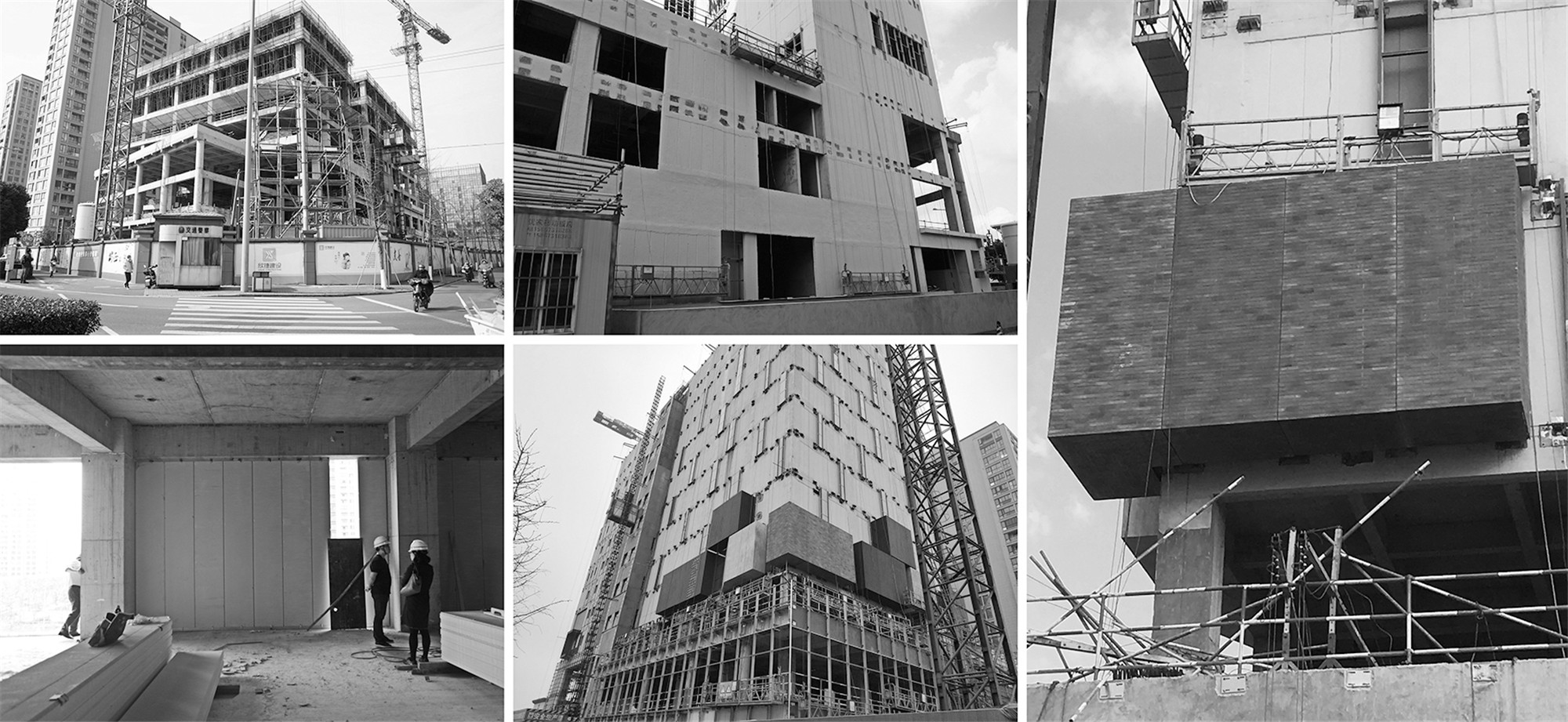
然后是围护外墙。区别于常规的加气混凝土砖,建筑外墙为ALC墙板,并采用了预制装配的施工手段。ALC板长度可以覆盖整个层高,具备良好的保温性能,无需再做附加的保温面层,这也使施工变得简单起来。
Then, the retaining wall. Different from the conventional aerated concrete slab, the exterior wall of this building adopts ALC wall panels, which are prefabricated and assembled. The length of the ALC board can cover the entire height of the layer. Since it has thermal insulation properties, no additional thermal insulation surface layer is needed, which made the construction becomes simple.
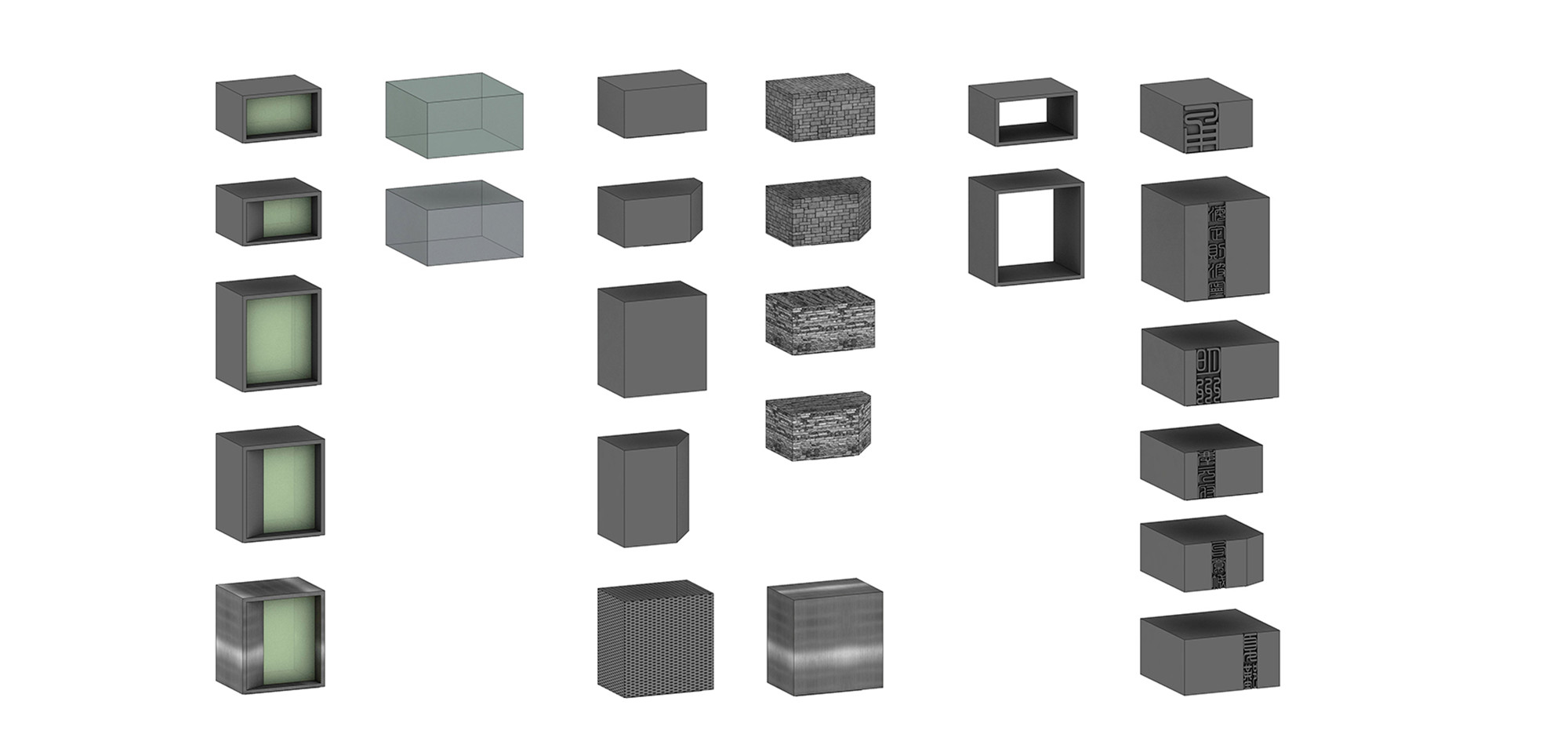
外墙装配式施工的另一大好处是几乎不需要进行湿作业,也不需要搭建覆盖整个建筑立面的脚手架维护网,这令工地变得整洁,施工过程对城市环境的影响也大大降低。同时,我们还可以清晰地记录下施工的整个过程,及时发现并解决过程中的问题,也把“砌筑”的过程实时地呈现在城市环境中。
Another advantage of the fabricated exterior wall construction is that the site becomes tidy and the impact of the construction process on the urban environment is greatly reduced, since there is almost no need for wet work and not necessary to set up scaffolding maintenance net covering the entire building facade. Meanwhile, the entire construction process can be clearly record and the problems in the process can be discovered and solved timely. We can see that the process of "masonry" is presented in the urban environment in real time.


包裹着各种建筑材质的“砌块”,同样采用了工厂整体预制的GRC模块,到现场再进行吊装。为了确保“砌块”的尺度和肌理达到预期效果,我们不厌其烦地去工厂通过1:1的样品推敲细部,并在现场挂样后,不断将其完善,最终达到理想效果。
The "blocks" wrapped with various materials also adopt overall prefabricated GRC modules in the factory and on-site hoisting construction methods. To ensure that the scale and texture effects of the "blocks" meet our expectations, we review the details through 1:1 sample in the factory tirelessly. Even after hanging the samples on the spot, we are still insisted on perfecting opinions and achieved the desired results.
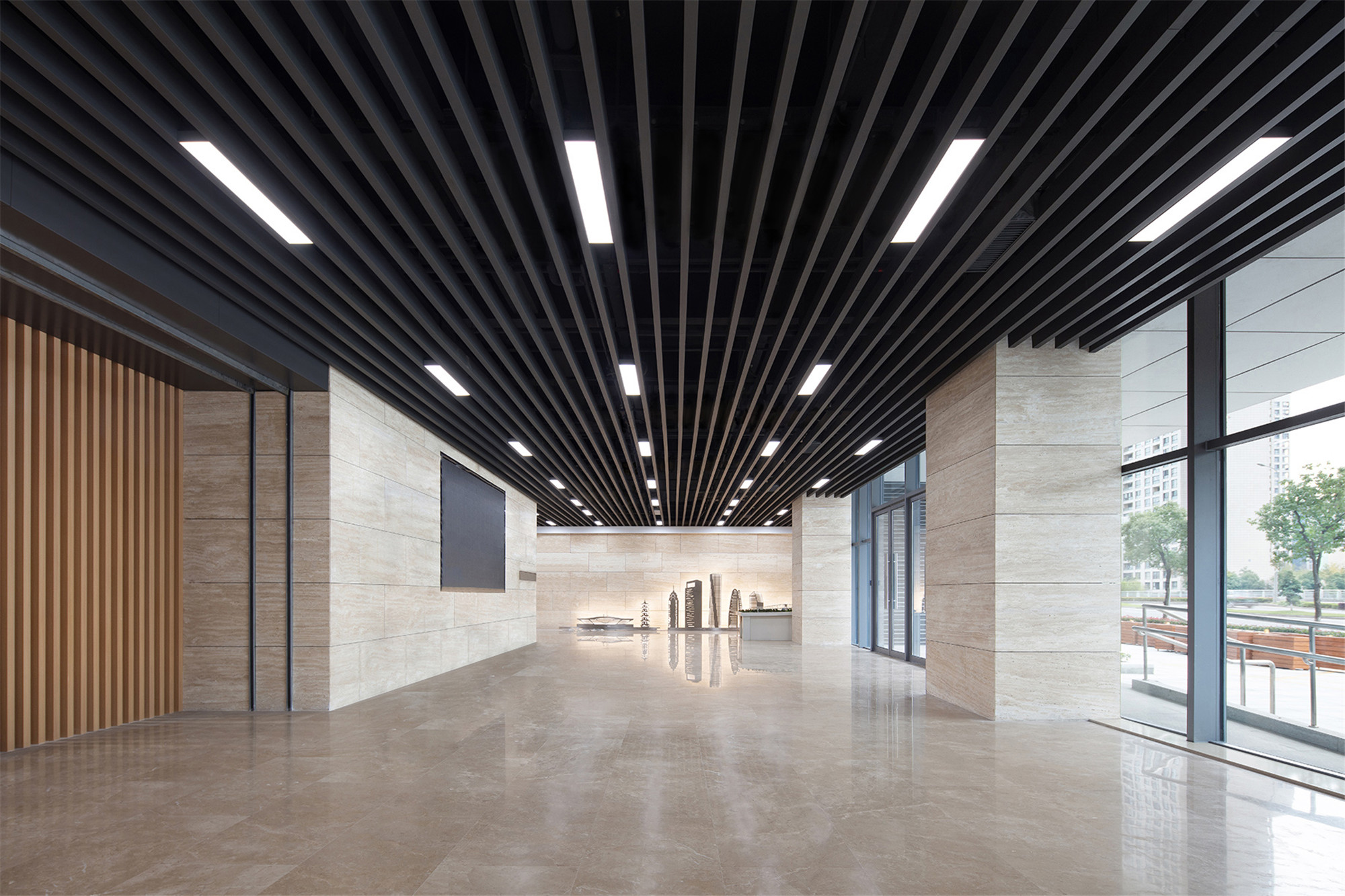
原先的设想是4米×8米的“砌块”整个吊装,如同真实的“砌筑”过程。但最终由于交通运输的限制,只能切割成小块,再到现场再拼装。尽管如此,当第一块“砌块”开始吊装,我们依然可以感受到“砌筑”这个朴素的建造动作带来的震撼力量。
The original idea was that the entire 4m X 8m "block" was hoisted, just like the real "masonry"; but in the end, due to transportation restrictions, it could only be cut into small pieces and assembled on site. Nevertheless, when the first "block" starts to be hoisted, the power brought by the simple construction action of "masonry" is still overwhelming.
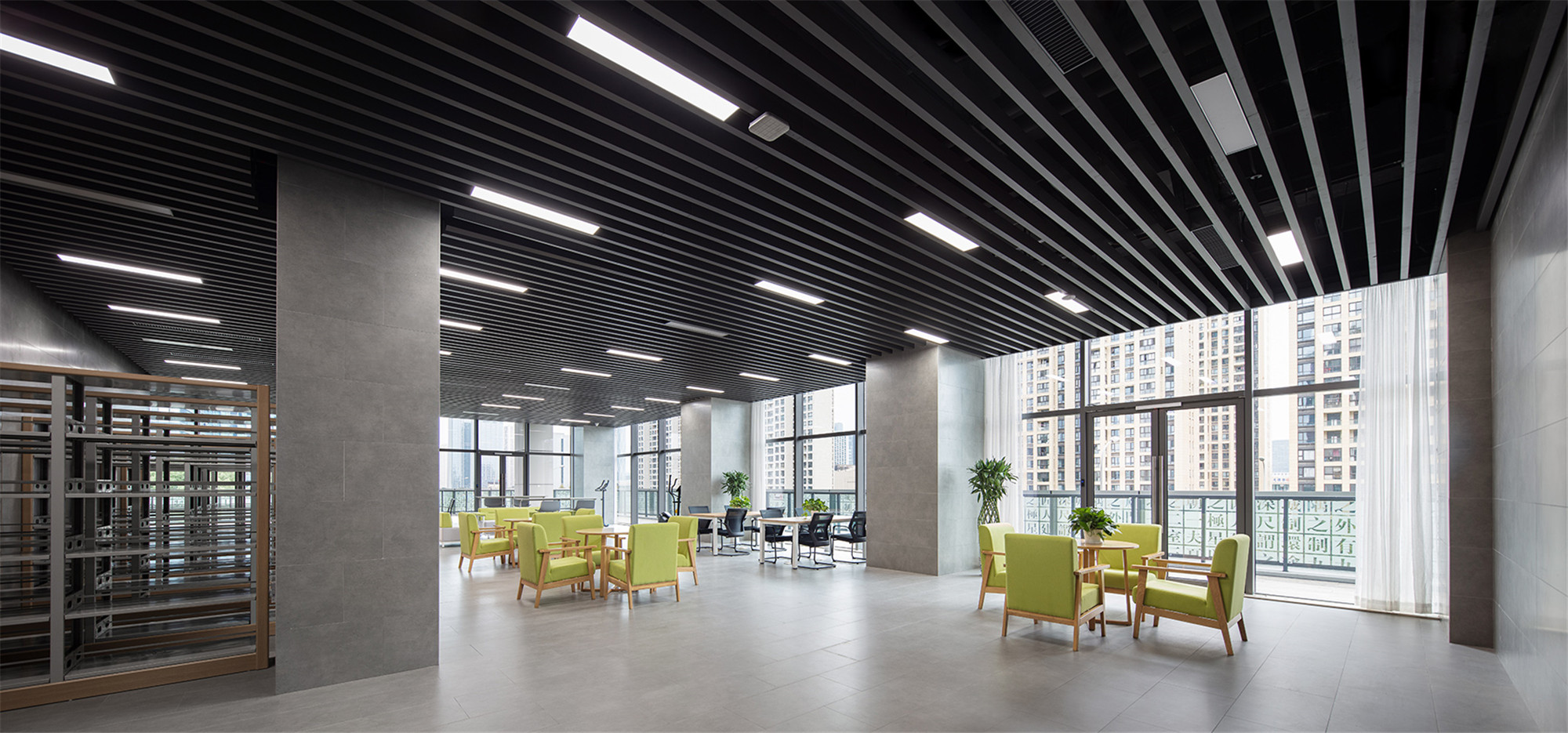
从“筑城”的文化隐喻,再到结构的模式搭建;从墙板的拼合,再到“砌块”的吊装,“砌筑”作为一种营造的逻辑,在城建档案馆的建筑实践过程中被贯彻始终。
From the cultural metaphor of "city building" to the construction of structural models; from the assembly of wall panels to the hoisting of "blocks"; "masonry”, as the construction logic, has been adopted in the construction of the urban construction archives consistently.
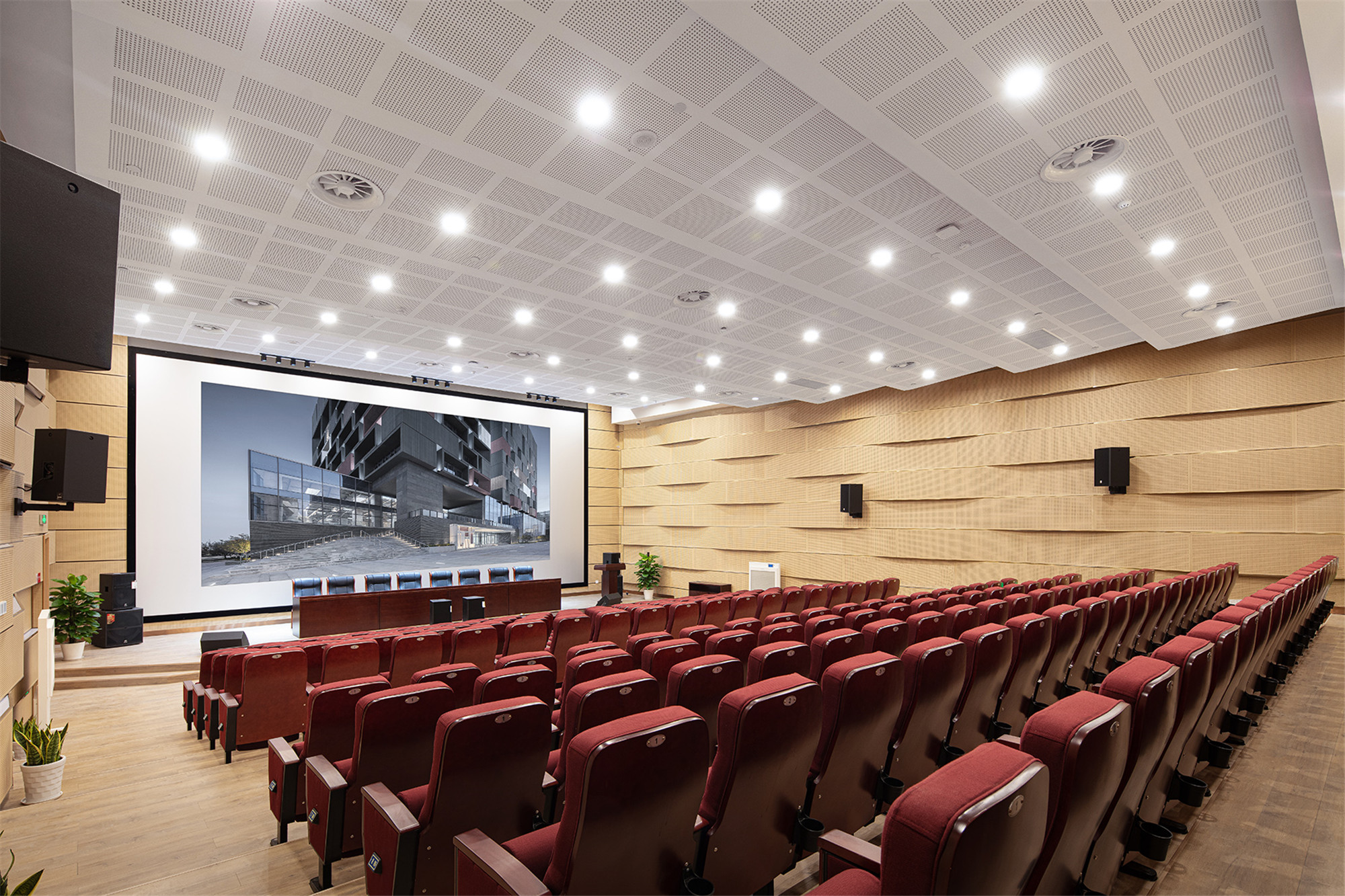
筑一座城,藏一部筑城史。
To build a city, then blend the history of fortification within.
我们希望通过这样一场“砌筑”的实践,来理解建筑学作为空间、文化,更作为营造和“器”的存在意义。
We hope that through such a "masonry" practice to facilitate the understanding of architecture as a space and a culture; even more as an existence of construction and a "tool".
设计图纸 ▽
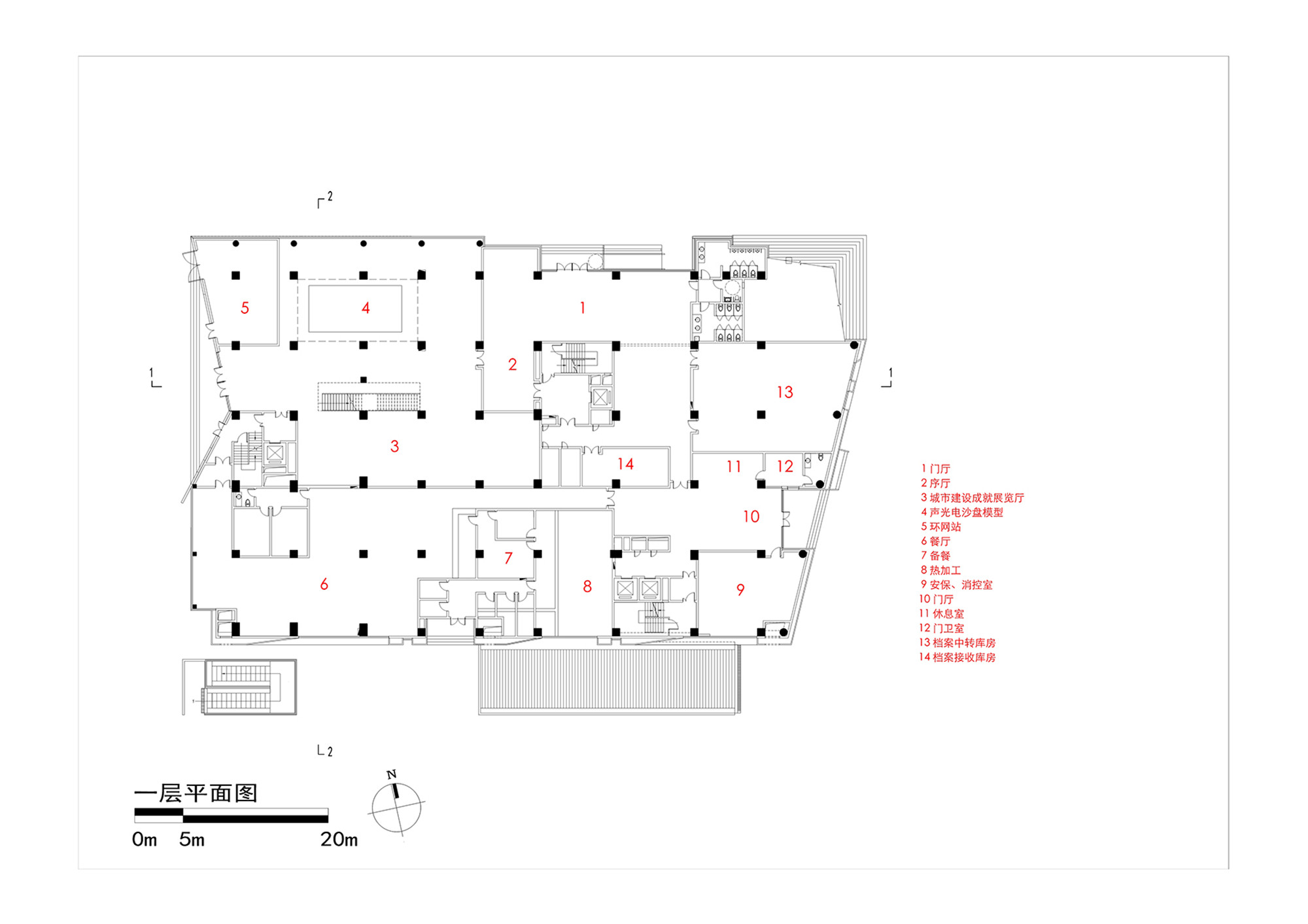
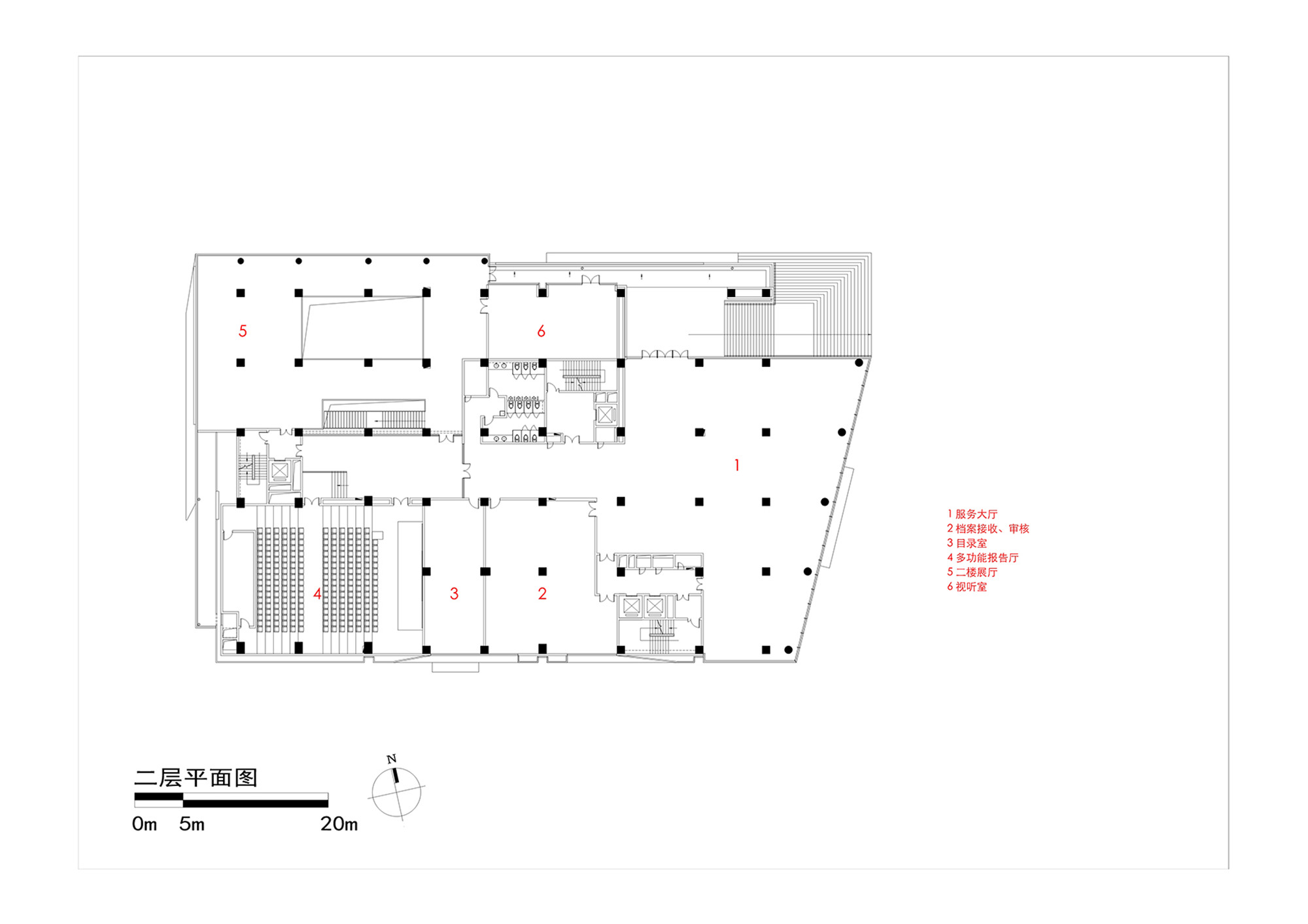
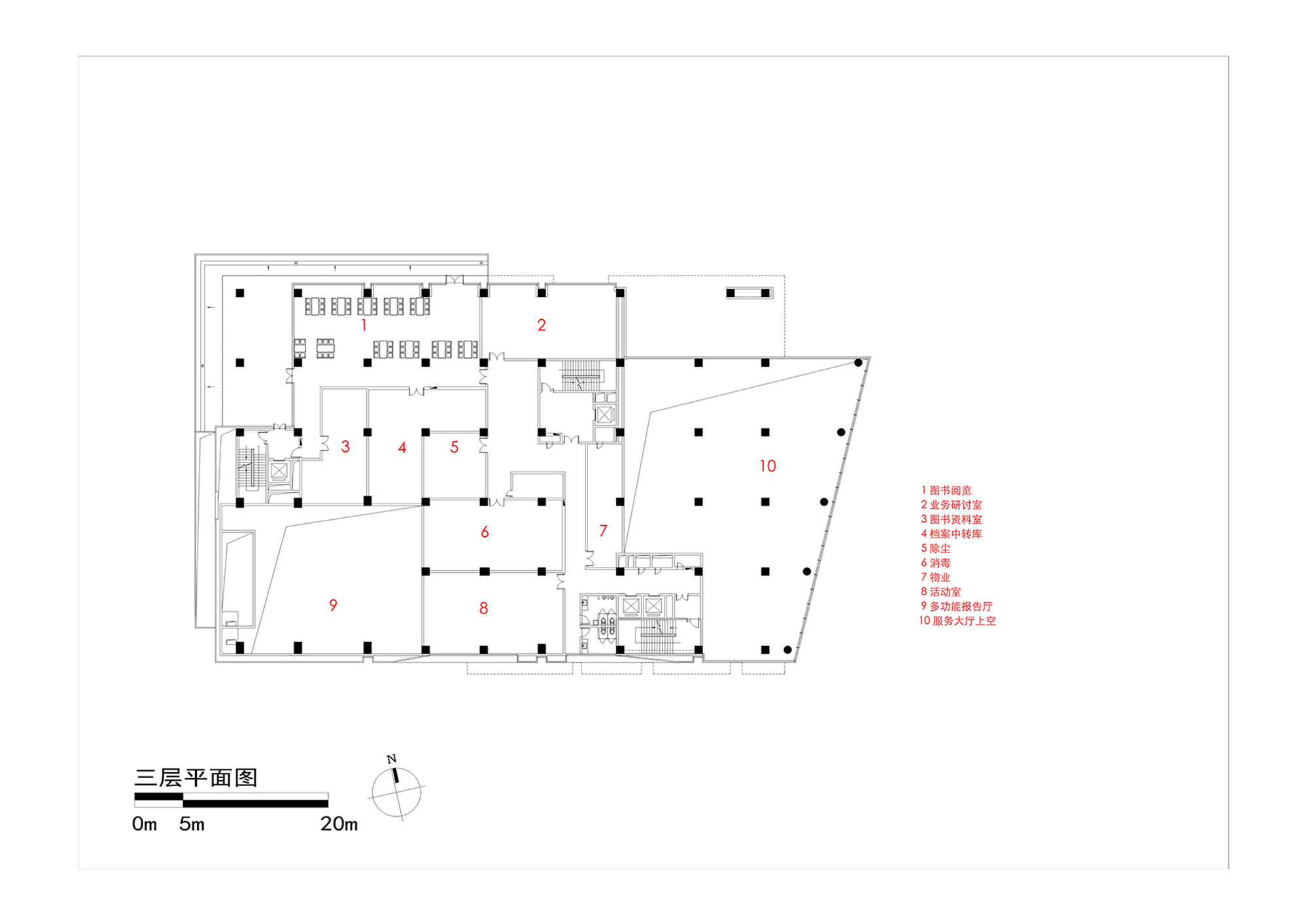
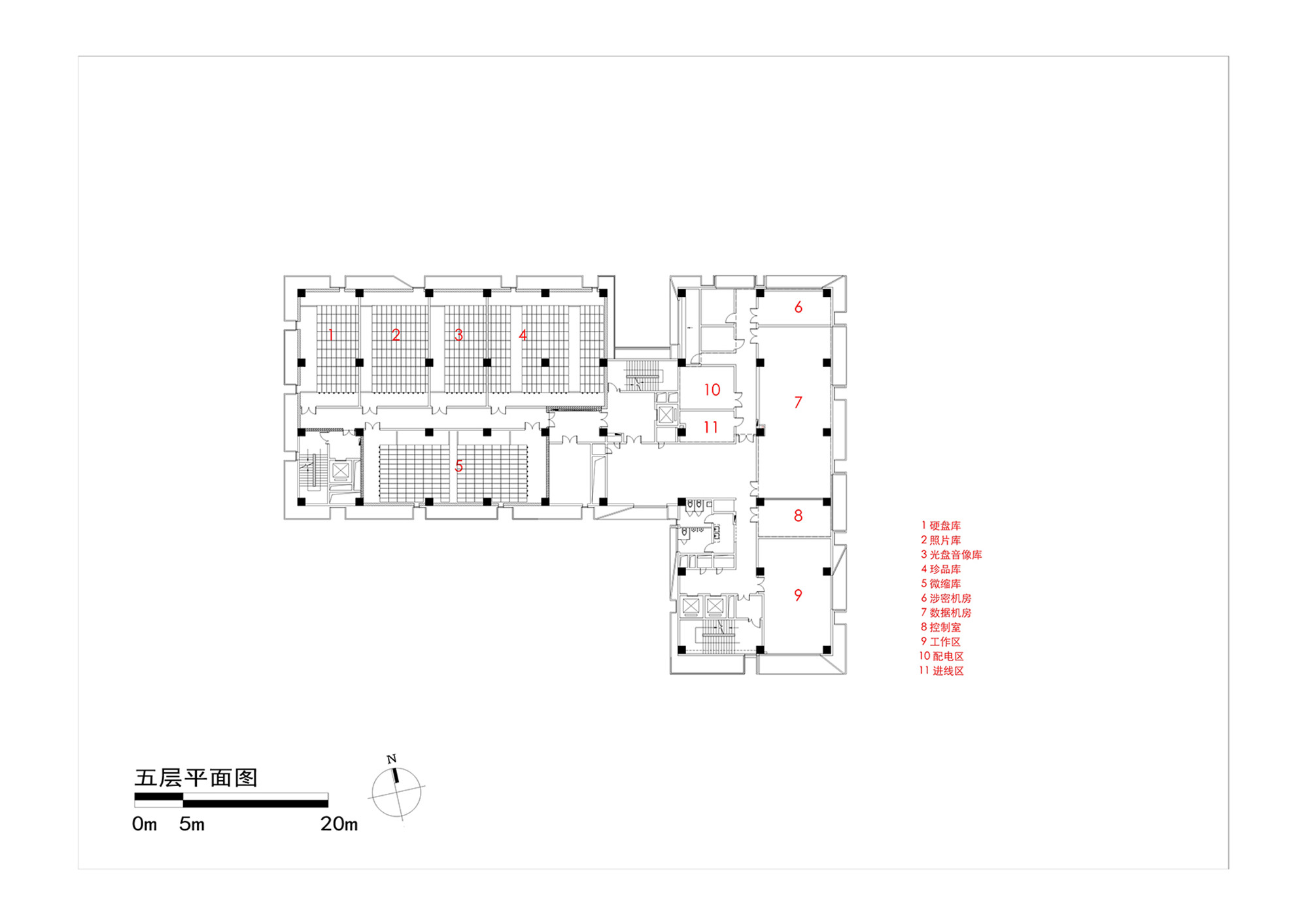

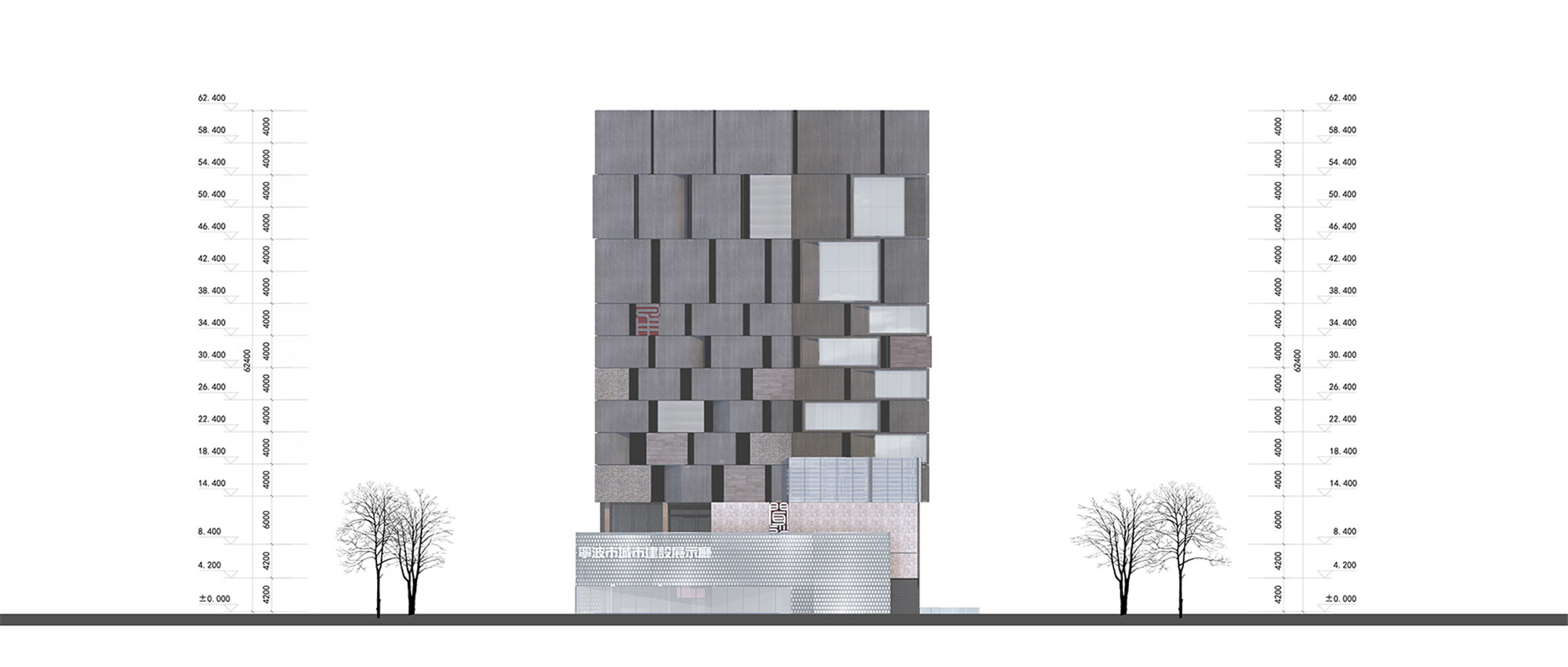
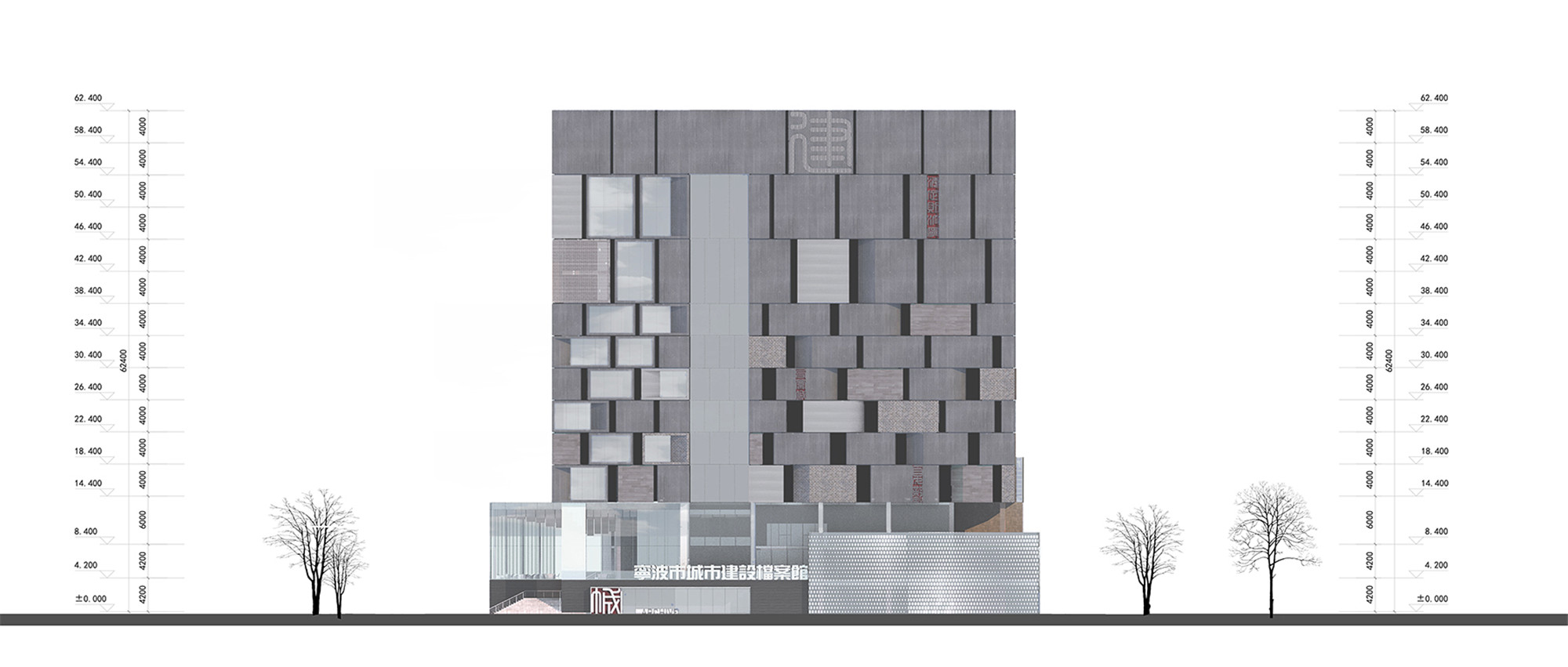
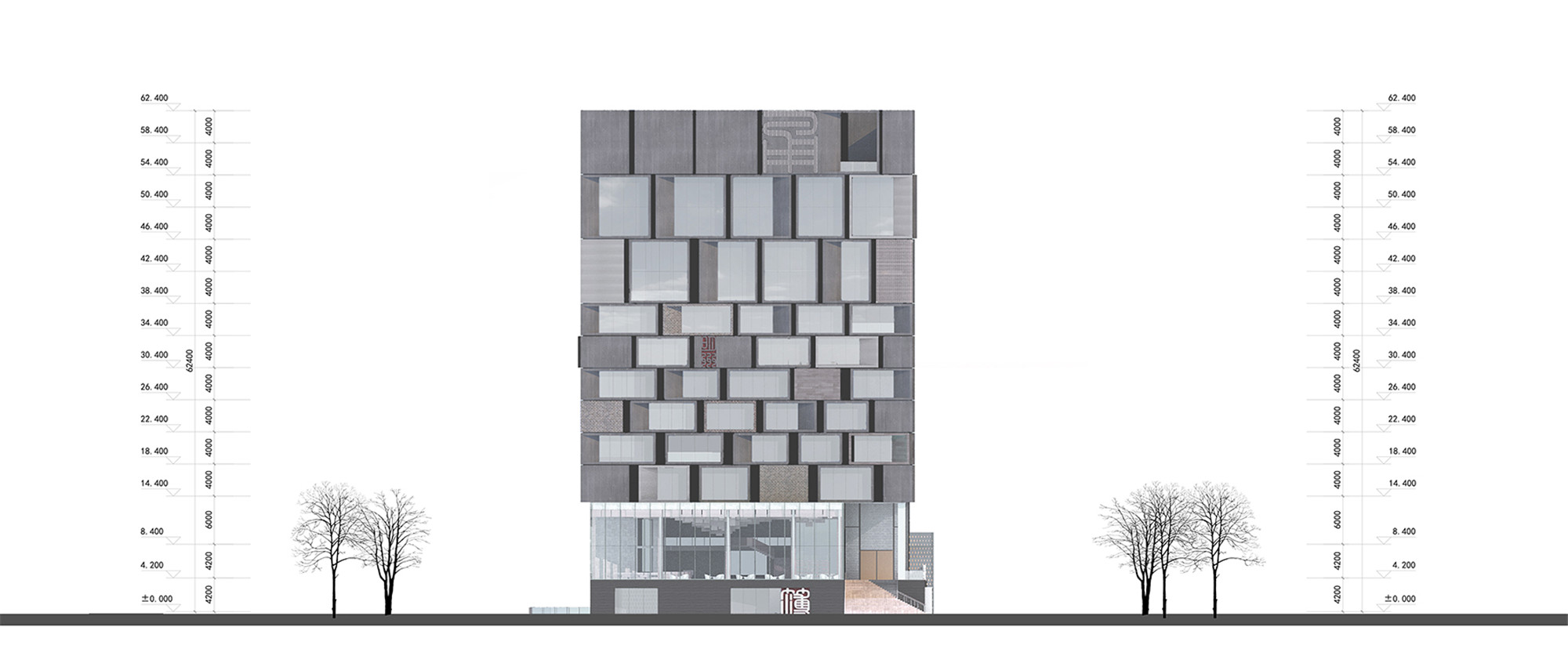

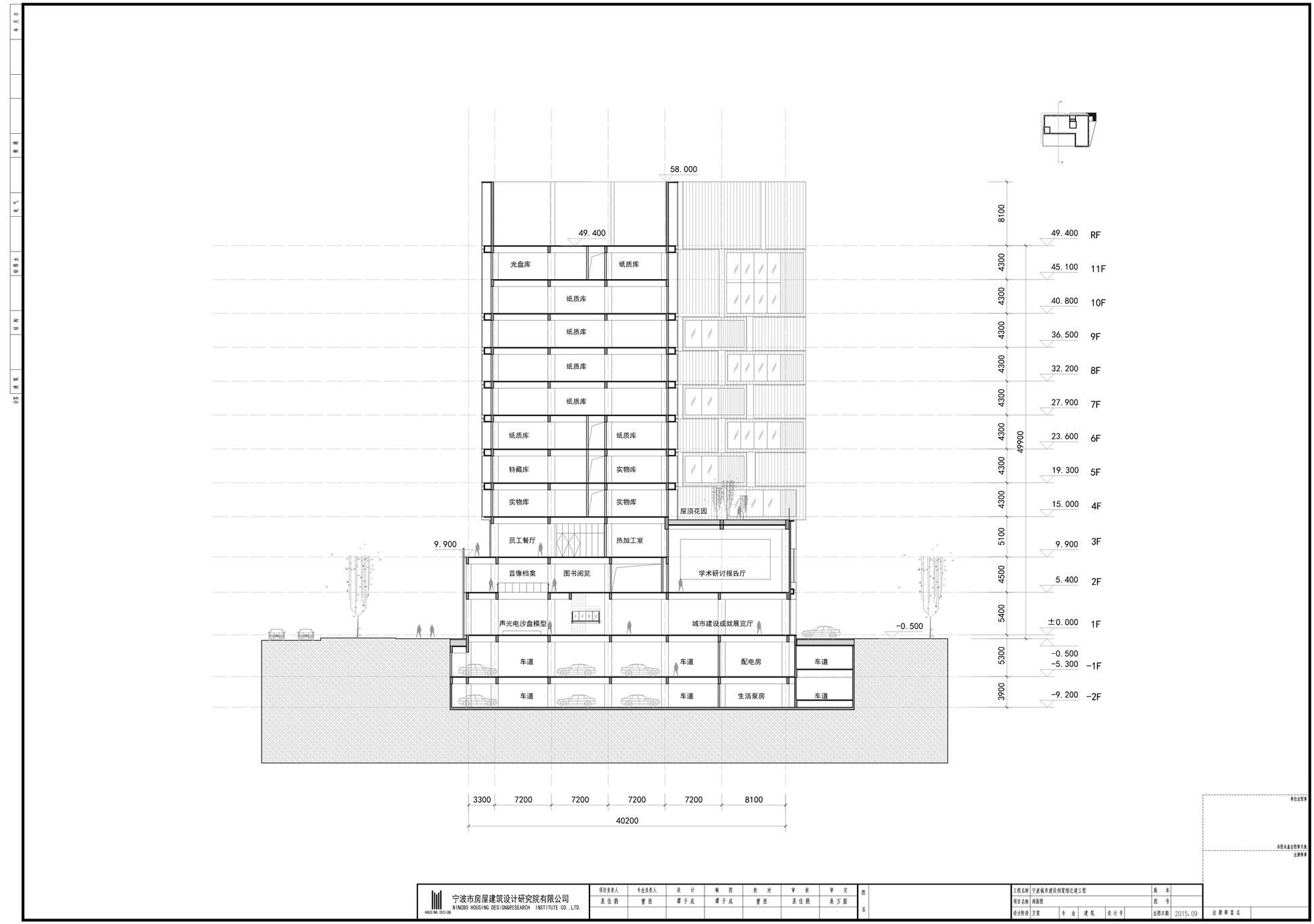
完整项目信息
项目名称:宁波城市建设档案馆
项目类型:建筑/室内
项目地点:浙江省宁波市东部新城核心区
设计单位:DC国际·c+d设计研究中心
主创建筑师:董屹
设计团队完整名单:董屹、贺玮玮、章甲、张春伟、汤洁
设计时间:2015年3月—2017年5月
建设时间:2017年5月—2020年7月
用地面积:6567平方米
建筑面积:23688平方米
照明:上海昭盟照明设计工程有限公司
施工图设计:宁波市房屋建筑设计研究院有限公司
摄影:山兮建筑空间摄影、行知影像、小流影像
版权声明:本文由DC国际·c+d设计研究中心授权发布,欢迎转发,禁止以有方编辑版本转载。
投稿邮箱:media@archiposition.com
上一篇:格伦·马库特作品:辛普森-李住宅
下一篇:丹尼尔·李布斯金作品:柏林犹太人博物馆,以解构重塑认知